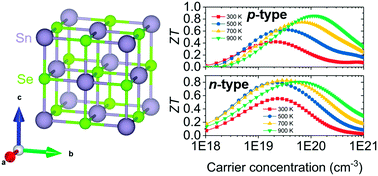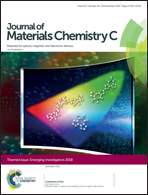Thermoelectric transport properties of rock-salt SnSe: first-principles investigation
Abstract
Recently, orthorhombic SnSe has aroused extensive attention due to its promising thermoelectric performance. Using first-principles calculations, we investigate the thermoelectric transport properties of SnSe with a rock-salt structure, which is a common structure for these state-of-the-art thermoelectrics, PbQ (Q = Te, Se, S) and SnTe. Firstly, we calculated the phonon spectrum and elastic constant, which justify the thermodynamic and mechanic stability. We found that rock-salt SnSe possesses low lattice thermal conductivity, which can be well interpreted using the calculated phonon spectrum and mean free path. The electrical transport properties are discussed based on the electronic band structure of rock-salt SnSe. The results show that the maximum ZT values are ∼0.85 (∼900 K) and ∼0.82 (∼700 K) for p- and n-type rock-salt SnSe, respectively. The ZTave values are ∼0.54 (9.0 × 1019 cm−3) and ∼0.67 (8.0 × 1019 cm−3) at 300–900 K for p- and n-type rock-salt SnSe, respectively. Our results indicate that rock-salt SnSe is a promising thermoelectric material.

- This article is part of the themed collection: Journal of Materials Chemistry C Emerging Investigators


 Please wait while we load your content...
Please wait while we load your content...